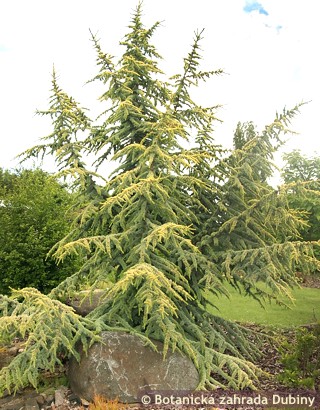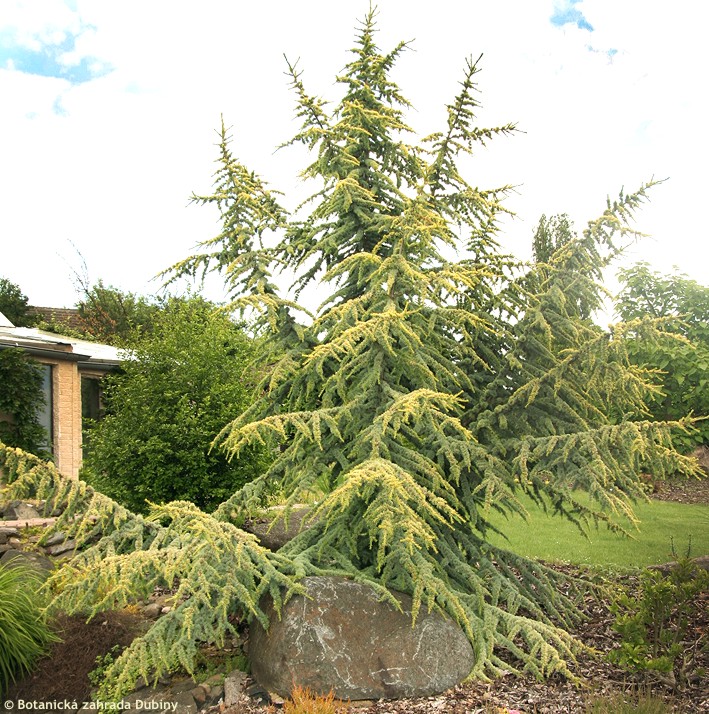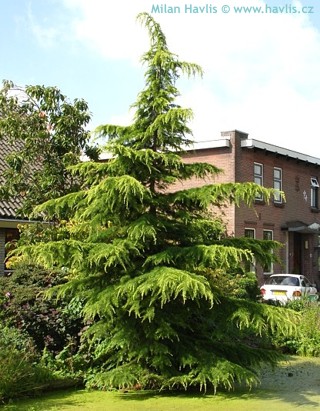Cedrus libani 'ATLANTICA AUREA' cedar of Lebanon


Cedrus
Cedar of Lebanon is the most popular cedar in our country as it combines two important features: it is fully hardy and has the typical, beautiful cedar shape. Atlantica Aurea is a less common, yet extremely beautiful variety with partially yellow needles.
Atlantica Aurea is a slow growing cedar of Lebanon with blue-green needles that emerge bright yellow-green in spring, mature to fresh green in summer, and turn yellow again for autumn and winter. Mature height is about 10 m in open spaces and much less in gardens. If your garden is too small you can easily control its size by pruning which cedars take very well. It can be done in early spring or in midsummer.
It grows reliably in almost any soil type, even chalky, just avoid too acidic locations. For the best results choose a sunny spot. Although cedar of Lebanon is a hardy species we do not recommend planting it in mountainous regions with prolonged winter periods or in frost pockets. Reliably hardy to -26°C (USDA zone 5b), possibly a little more.
Last update 21-02-2018





































